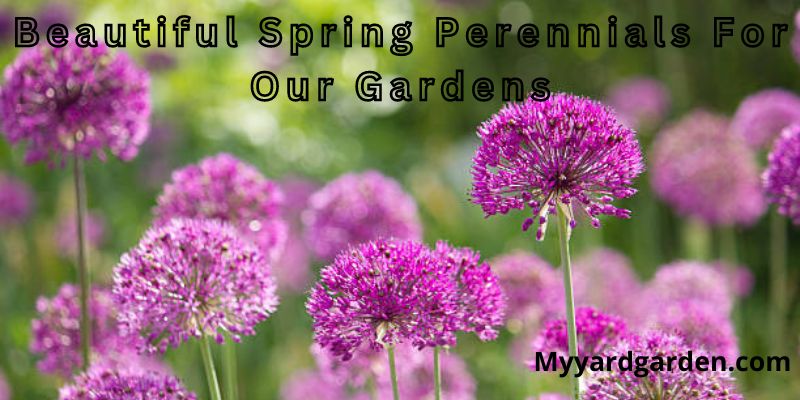Spring is a time for regeneration and new beginnings, and if we want to enjoy the season to its fullest, our gardens must be well-stocked with beautiful perennial plants.
Perennials are a great choice as they provide us with vibrant blooms year after year without needing to be replanted.
Beautiful Spring Perennials For Our Gardens
These hardy plants are perfect for the gardener who wants to enjoy a colorful display in their yard all year round. Here’s a list of some of the best spring perennials that can add beauty and interest to any garden.
Daffodils (Narcissus)

One of the most recognizable and beloved spring flowers, Daffodils are sure to bring a cheerful burst of color to any garden. They come in various sizes, shapes, and colors, white, yellow, orange, and apricot.
Planting daffodils is easy to add lasting beauty to your yard; these perennials can bloom for years with minimal upkeep.
To get the most out of your blooms, plant bulbs in sunny areas with well-drained soil and give them periodic water during dry spells.
Wide varieties will have multiple flowers per stalk so you can enjoy colorful bouquets in no time. Once they’re established, they’re also low maintenance and naturalize easily.
As a bonus, they are deer-resistant and attract beneficial pollinators like butterflies. Add these pretty flowers to your garden, and leave some for the fairies.
Tulips

Tulips are a classic spring perennial that can bring vibrant bursts of color and life to any garden. They come in many shapes, sizes, and colors, making them perfect for bringing diversity to your outdoor space.
Not only do tulips add beauty to your garden, but they also make excellent cut flowers for indoor arrangements. When it comes to planting tulips in the garden, you can use two main methods: naturalizing or forcing.
Naturalizing is when you plant the bulbs directly into the ground during late summer or early fall so they will bloom in spring.
Forcing involves putting the pre-planted bulbs in a cool dark spot like a basement, fridge, or potting shed until they sprout in the spring.
When planting the bulbs, choosing a spot that has at least six hours of sun and has well-draining soil is important.
The depth at which you plant them depends on their size: small bulbs should be planted about four inches deep, medium ones five to six inches deep, and larger ones seven or more inches deep.
Tulips don’t require much maintenance once they’re in the ground, but there are some things you can do to keep them looking their best.
Fertilizing is recommended twice a year in late fall and early spring with a slow-release fertilizer. You should also regularly deadhead spent blooms so that energy isn’t wasted on reseeding and can go toward new growth.
Finally, it would help if you mulched around the plants in late fall to protect them from any extreme cold temperatures that may occur during winter.
Overall, tulips are a wonderful addition to any garden and bring lots of beauty and life each spring. You’ll be rewarded with stunning blooms with proper planting and maintenance for years to come.
Iris

Iris is a flowering spring perennial that will add beauty and elegance to your garden. Its distinctive three-petal flowers come in various colors, from deep blues and purples to soft lavenders and yellows.
The foliage is strappy, arching leaves that are typically green or blue-green. Irises require full sun, but they can tolerate partial shade and prefer well-drained soil with plenty of moisture.
They are easy to maintain and do not require much special care; ensure the soil doesn’t dry out completely in summer.
Iris plants should be divided every three years for best performance; replanting new divisions ensures healthier blooms for the next season.
With its vibrant colors and rapid growth, Iris is the perfect addition to any garden. It can provide a colorful backdrop for other plants and bring beauty and freshness to your outdoor space.
Get ready for a show-stopping display of color in springtime with these lovely plants.
Peonies
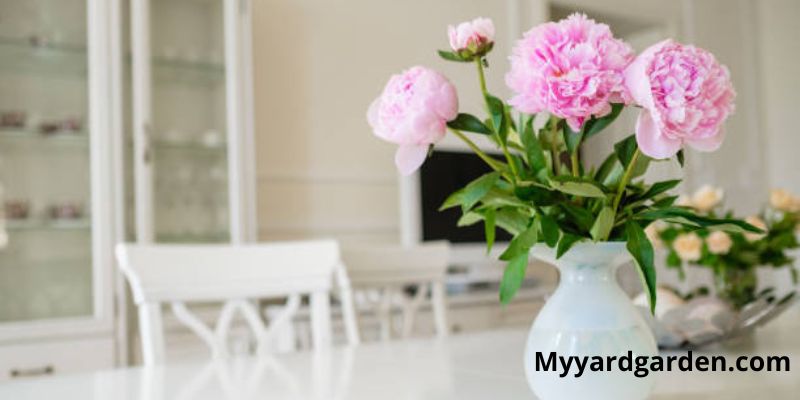
Peonies are a beautiful spring perennial, blooming with large, colorful flowers in shades of pink, red, and white. They are also popular for their pleasant fragrance. Peonies thrive best in full sun and well-drained soil.
To ensure the best blooms, it is important to plant them at the right depth- too shallow or too deep can cause issues later on. The roots should be planted at least two inches below the soil’s surface.
Once planted, peony care is relatively simple. Watering once a week during dry periods will keep them looking vibrant and healthy throughout the growing season.
Deadheading spent blossoms will encourage more blooms as well as prolong flowering time. Fertilizing every few weeks throughout the growing season is recommended to ensure the plants have enough nutrients.
In the fall, it’s important to cut back any remaining foliage to help keep diseases away and prevent damage from cold weather.
Peonies are quite hardy, but in zones with harsh winters, a layer of mulch should be applied over the roots once temperatures drop below freezing.
With proper care and attention, peonies will continue to bring beautiful blossoms for many years. Whether you choose them for their showy blooms or heady fragrance, these spring perennials will surely be a highlight in your garden.
Lilacs

Lilacs are a stunning and fragrant addition to any garden. They bloom in purple, white, magenta, and even yellow, making them a great choice for adding color to your landscape.
These perennials can reach heights up to 10 feet tall and 8 feet wide with good care. Planting should occur in the fall before the ground freezes to allow enough time for the roots to set down.
When planting lilacs, they should be placed at least four feet away from buildings or other plants. Lilacs need full sun and well-draining soil, so amend the soil before planting.
When the temperatures start warming up in springtime, you’ll begin seeing beautiful buds from lilac stems. Once the buds are fully open, they bring an unmistakable sweet scent that will linger in your garden for weeks. They are also very attractive to bees and butterflies.
Be sure to prune back old flowers to encourage new growth and snip off any dead wood or diseased branches throughout the season. Keep the soil moist but not soggy, as too much water can cause root rot.
Fertilize twice a year, once in early spring and again after blooming has finished, using a balanced fertilizer designed for perennials.
Lilacs are highly versatile plants that make great additions to formal gardens and naturalized settings. Their colorful blooms set against lush green foliage create a beautiful vignette that will brighten up any landscape.
With proper care, these lovely perennials will bring beauty and fragrance to your garden year after year.
Bleeding Heart
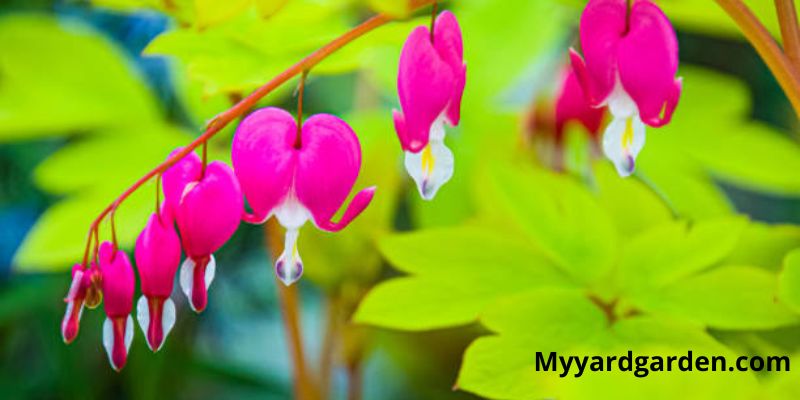
Bleeding Heart is a charming and beautiful spring perennial that adds a whimsical, romantic touch to any garden.
Its distinctive heart-shaped pink or white flowers dangle from arching stems and give off a sweet fragrance that will surely delight all passersby.
Bleeding hearts are easy to grow, preferring partial shade and moist, well-drained soil. They bloom for about six weeks in late spring and then enter dormancy over summer.
When the weather cools again in fall, they will grow anew, with new foliage appearing in early winter. Bleeding hearts make excellent additions to woodland gardens and containers since they tend not to spread out of control like some other perennials.
They look especially lovely when paired with hostas, ferns, or other shade-loving plants. With its unique beauty and minimal care requirements, the bleeding heart is a must-have for any garden.
Anemones
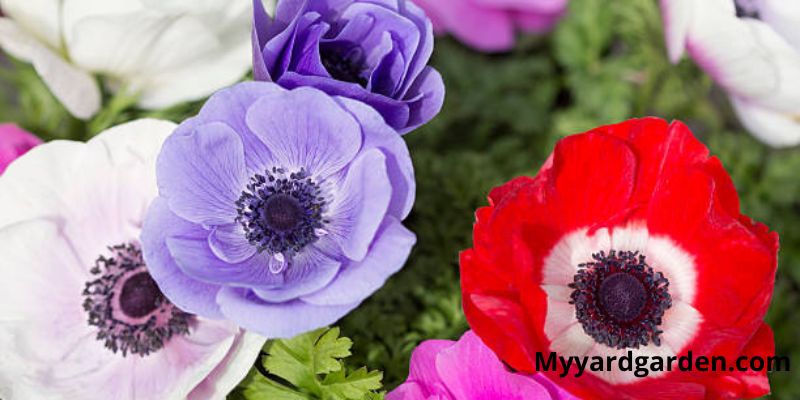
Anemones are a popular perennial spring flower with many colors and sizes to choose from. They prefer full sun but can tolerate part shade and come in various forms.
Their bright colors provide wonderful contrast when placed next to other perennials in the garden. Anemones tend to be quite drought tolerant once established but will need some supplemental water during periods of dry conditions.
To ensure healthy plants, it’s important to divide them every three years by removing some of the root material and replanting it in another garden area.
Anemones are generally pest and disease-free but susceptible to leaf spot and root rot. To avoid these problems, water at the base of the plant rather than from above and immediately remove any diseased foliage or roots.
Additionally, deadheading spent blooms will encourage more flowers to appear throughout the season. With attractive foliage and vibrant colors, anemones are a great choice for any garden looking to add some spring interest.
Their easy maintenance requirements make them a hassle-free addition that requires minimal care year after year. With such wide varieties available, there is something for everyone.
Foxgloves
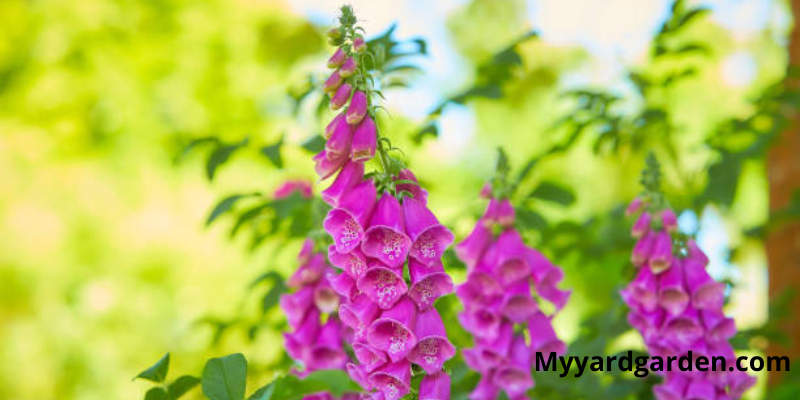
Foxgloves offer a unique touch of beauty in the spring garden with their tall, delicate spikes of blooms.
The flowers are typically tubular and come in soft shades of pink, purple, yellow, and white. They usually grow about two or three feet tall and have a long bloom period from late spring to early summer.
The foliage of foxgloves is often as attractive as the blooms, with thickly-textured leaves covered with tiny hairs. In addition to being beautiful, foxgloves attract pollinators like bees and butterflies into your garden.
When planting foxgloves, they do best in areas with full sun or partial shade and well-drained soil. It’s important to note that foxgloves can be quite invasive, so they should be planted in an area where they won’t get out of control.
They don’t require much maintenance and are relatively pest-free, but you may need to deadhead them if the flowers become unsightly.
Foxgloves make great companions for other spring flowering perennials like Bleeding Hearts. Planting them in groupings is a great way to create a stunning display of color, texture, and movement in your garden.
Whether planted as part of a large bed or border, these unique spring blooms bring beauty and grace into any garden.
Why Spring Is A Great Time To Plant Perennials In The Garden
When the spring season arrives, gardeners are eager to get outside and plant different perennials. Perennials are a great choice because they provide year-round beauty and interest to your outdoor space.
By planning and selecting the right plants for your climate and soil type, you can ensure that your new perennials will thrive in their new home.
One of the main advantages of planting perennials is that once you have established them in your landscape, you won’t have to replant them yearly as many annuals require.
This allows gardeners more freedom when planning their gardens and allows for more experimentation with color and texture combinations.
Many perennials also require minimal care and maintenance once established, making them a low-maintenance choice for most gardeners.
Spring is also an ideal time to plant perennials because the soil has had time to warm up from the winter chill and will be easier to work with.
This allows roots to establish themselves more quickly, giving your plants a better chance of surviving. The milder temperatures in spring also provide plenty of sun and rain, which are necessary for plants to grow healthy and strong.
Lastly, planting perennials in the spring gives them enough time before fall frost arrives so they can become fully established during the growing season. This helps ensure that they will come back year after year with minimal effort on your part.
Spring is an ideal time to plant perennials because it offers the perfect conditions for them to establish themselves and thrive in their new home.
With a little planning and the right plants, you can have a beautiful garden full of perennial blooms for many years.
Considerations When Choosing Spring Perennials
Hardiness Zone
When selecting spring perennials, the hardiness zone is one of the most important considerations. Some plants can survive the coldest temperatures in any given area and return yearly.
Check the USDA Plant Hardiness Zone Map or talk to a knowledgeable local nursery worker to determine what zone you reside in and which plants are suitable for your climate.
Sun And Shade Requirements
In addition to hardiness zones, it is essential to understand sun and shade requirements for each type of plant being considered. The amount of sunlight necessary varies greatly from species to species.
Fortunately, many perennials can tolerate both full sun and partial shade. Inspecting the label on a plant or referencing an online resource can help verify how much light it needs each day.
Soil Type And PH
Soil type and pH is also a critical factor in choosing spring perennials. Knowing your soil composition helps to determine which plants will thrive or struggle in the ground.
Additionally, it is important to know if your soil is acidic, alkaline, or neutral before planting. A professional soil test can be conducted to assess the exact pH of the earth.
Height And Spread
Height and spread are key components when deciding on spring perennials for any given area.
Measuring the desired space ahead of time prevents overcrowding later on. Considering how high and wide each plant will grow throughout several seasons can avoid unnecessary maintenance.
Bloom Time
Finally, bloom time should be taken into consideration when selecting spring perennials. Most plants have a specific window of time in which they flower, which should be considered when planting.
Again, reading the label or researching online can provide an understanding of how long each species will remain in bloom for each season.
A successful spring perennial garden requires careful planning and thoughtfulness before purchasing any plants.
By considering the hardiness zone, sun and shade requirements, soil type and pH, height and spread, and bloom time for each species, gardeners can ensure that their plants will thrive in the environment.
With a little knowledge and preparation, anyone can create a beautiful outdoor space that blooms with life during the spring months.
Planting And Care
Proper Planting Techniques For Perennials
When planting perennials, it is important to prepare the soil well and ensure that your chosen plants are planted at their preferred depth. Dig a hole for each plant twice as wide and slightly deeper than the pot.
Gently remove the plant from its pot and place it in the hole, making sure to spread out any roots evenly. Backfill the hole with soil and firm it lightly with your hands or by tamping it down with your foot.
Water thoroughly after planting to ensure that all of the air pockets in the soil around the root ball have been filled.
Watering Requirements
Watering requirements will vary depending on your climate, but most perennials generally need an inch of water per week during their active growing season.
Ensure you’re not over or under-watering the plants, and water deeply so the moisture reaches the roots.
Fertilizing Requirements
Fertilizing can be done a few times throughout the growing season, but it’s important to use a fertilizer specifically formulated for perennials.
Read and follow instructions carefully, as some fertilizers are best applied when plants are actively growing, while others are better used during periods of dormancy.
Deadheading And Pruning Tips
Deadheading spent flowers helps keep your garden looking neat and encourages new growth.
Pinch off any dead flowers once they have wilted and faded away. Pruning should also be done when necessary to keep your perennials healthy and encourage more blooms.
Wait until after flowering has finished before pruning, as this will ensure that you don’t accidentally remove any buds or healthy growth.
Pest And Disease Control
If pests or diseases become a problem, the best action is to act quickly and remove any affected parts of the plant as soon as possible. Spraying with an appropriate pesticide may be necessary if the problem persists.
Always read and follow the instructions carefully when using any pesticides or fungicides, and try to use organic products where possible.
Proper planting techniques, regular watering, fertilizing, and pruning are all essential for keeping your perennials healthy and looking their best.
Pest and disease control should not be ignored either, always take quick action to rid your garden of these issues before they spread further.
With the right care and attention, you can ensure your perennials are a delight for many years.
Conclusion
Beautiful spring perennials like bleeding hearts, anemones, and foxgloves are a great way to bring color and life into our gardens.
With their unique blooms and easy maintenance requirements, these plants can provide years of enjoyment with minimal effort.
Whether planted as part of a large bed or border, they will create a stunning display of color that is sure to envy all your neighbors.
So please choose one (or more.) of these beautiful plants for your garden this season and enjoy the beauty they offer.
